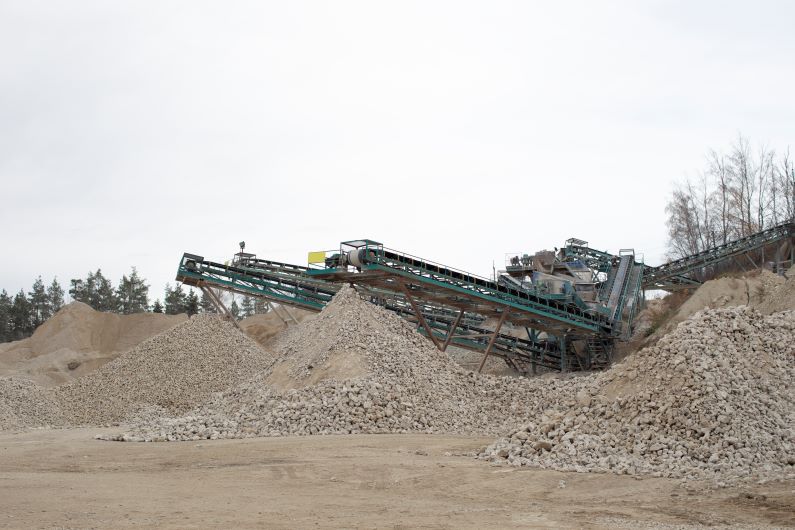
This presentation ‘Lessons Learned from Stakeholder Engagement and Education on the Sustainable Pavements Programme’ was delivered at the 2023 ACI Convention, San Francisco by Milena Rangelov VP of research in VitalMetrics, who has worked on the Federal Highway Administration sustainable payments programme, together with Michelle Helsel. It specifically focuses on mix design optimisation with durability. This is Part 2 of a four-part series.
… continued from Part 1
Covering 28 total mainline paving projects from 2011 to 2019 across the US, the study aimed to assess the state of practice in paving concrete. Notably, the study focused on the cradle-to-gate LCA of these projects, emphasising material production and mixtures while considering sustainability parameters. The LCA mirrors what one would obtain with concrete Environmental Product Declarations (EPDs). This scope covers the production of all material constituents, transportation to the concrete mixing plant, and the mixing process, all for one cubic meter of concrete mix. Additionally, they delved into materials sourcing with state departments of transportation to understand the impact of transportation.
Summarising key mixture statistics, they analysed the cementitious material content distribution, paste content, SCM usage, and types of SCMs employed in these mixes. Noteworthy observations include the tendency to exceed the recommended maximum paste content of 25%, the prevalence of binary mixes with a single SCM, and the diverse use of SCM types, including type F fly ash, type C fly ash, slag, and natural pozzolan.
Crucial for concrete durability, the water-to-cementitious ratio varied from 0.35 to 0.5. Prescriptive specifications largely contributed to the higher cementitious contents and paste contents in these mixes, aligning with observations of premature cracking by the MCTC crew. This trend, associated with performance issues, also has implications for sustainability and greenhouse gas (GHG) emissions.
Box plots representing seven-day, 20-day, and 56-day compressive strength of the mixes revealed interesting trends. On average, these mixes achieved the 28-day design requirements by the seventh day, and by the 28-day mark, the requirements were surpassed significantly. These findings highlight the potential for optimising mix designs to enhance sustainability and reduce greenhouse gas emissions without compromising performance.
While the compressive strength of these paving concrete mixtures is impressively high, it prompts a crucial question: are we overdoing it? The answer is not affirmative. The prevailing trend reveals an inclination towards overdesign, as these mixes surpass the required strength levels. Unfortunately, this approach compromises durability, increases costs, and exacerbates the environmental footprint of these mixtures.
Surface resistivity and permeability
Surface resistivity, a key indicator of concrete durability, aligns with our observations. The majority of mixes fall within medium to low permeability ranges on both the 20-day and 56-day marks. However, the overarching concern lies in the pursuit of excessively high compressive strength, contributing to compromised durability. This is often a consequence of contractors aiming to avoid penalties associated with not meeting the 28-day design requirements.
The investigation into the correlations between mix design parameters and GWP sheds light on essential relationships. Cement content exhibits a strong linear correlation with GWP, emphasising that higher cement content leads to a higher environmental impact. Similarly, the type of mix design, whether binary or ternary, and the use of SCMs influence GWP. Notably, higher cement content correlates with higher GWP values, reiterating the need for sustainable mix design practices.
Continued in Part 3…
More news
- PART 2: CONCRETE IN THE DESIGN OF A UNIQUE LUXURY HOME IN GEORGE, SOUTH AFRICA
- PART 1: CONCRETE IN THE DESIGN OF A UNIQUE LUXURY HOME IN GEORGE, SOUTH AFRICA
- MVULE GARDENS, AFRICA’S LARGEST 3D-PRINTED AFFORDABLE HOUSING PROJECT
- PART 3: HARNESSING THE POTENTIAL OF HIGH SULPHUR FLY ASH IN CONCRETE PRODUCTION
- PART 2: HARNESSING THE POTENTIAL OF HIGH SULPHUR FLY ASH IN CONCRETE PRODUCTION




